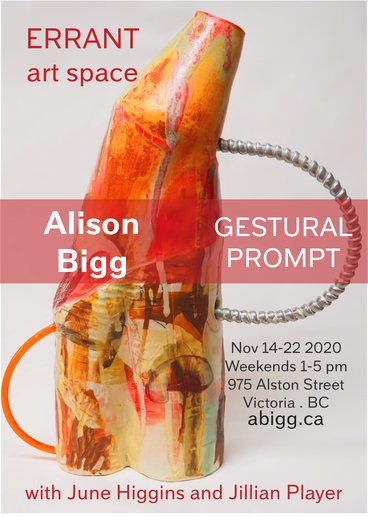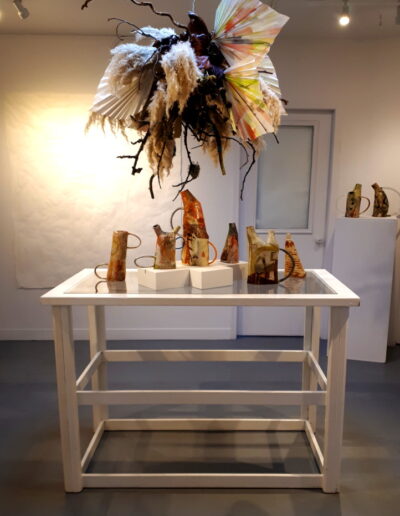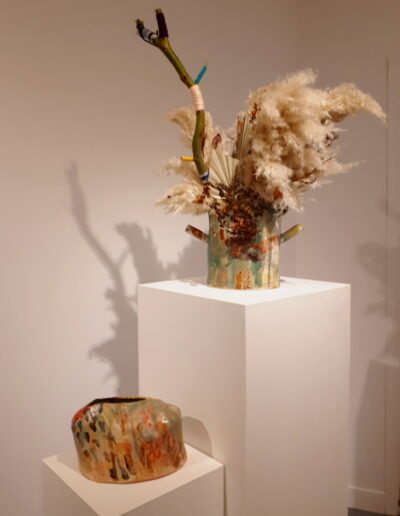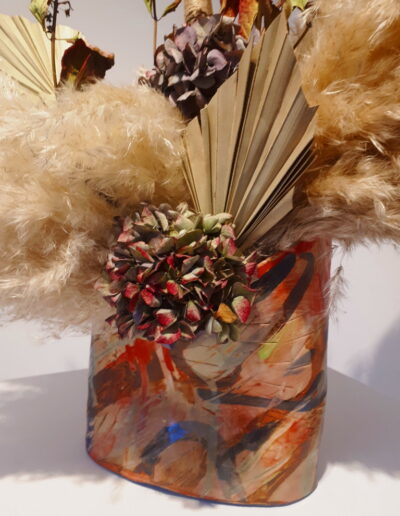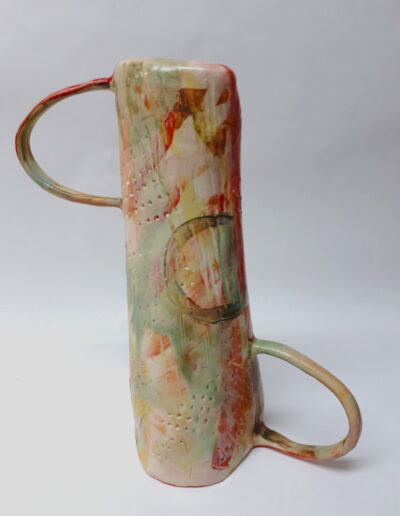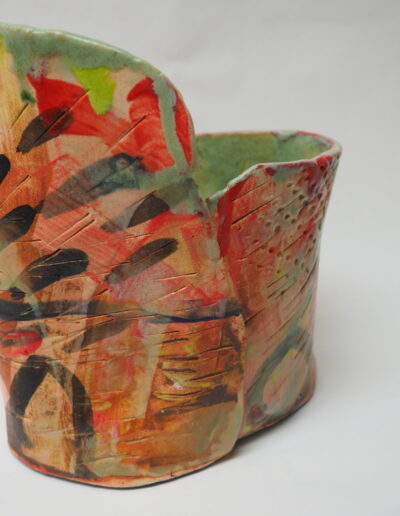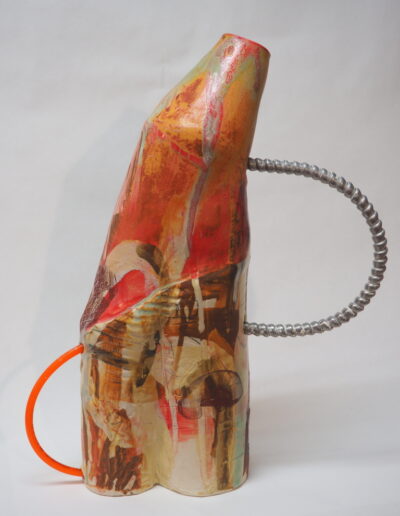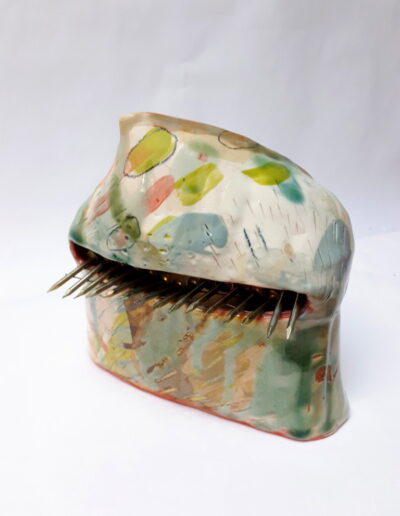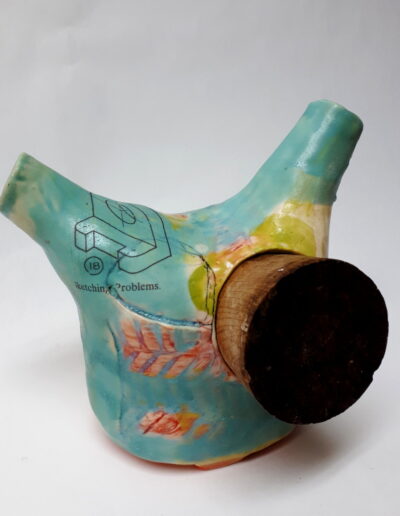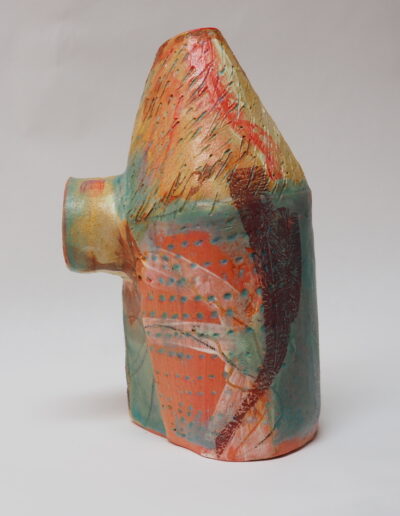Gestural Prompt : Errant Art Space November 2020
with June Higgins and Jillian Player
“At times the clay moves so effortlessly that my hands seem to follow, not to initiate, the movements of the clay. I notice an emotion in my hands that seems to connect them with my chest…”
Harry Remde from The Art in a Craft, 1975
Over the last few years of my 30-year relationship with clay, I have been going through the process of leaving behind the ingrained suggestion of ‘functional pottery’. I have slowly learned to let the clay behave as it intrinsically wants to, without a preconceived idea of what is being built; letting go of the struggle and partnering with the clay.
As with the expressionist style of painting and drawing, the clay form and surface evoke a nonverbal communication, cueing their own gestural prompts; speaking their own language.
Jillian Player
The floral art I created for this show was informed directly by Alison Bigg’s ceramics and the title of the show – Gestural Prompt. Responding to her muted yet colourful palette, I worked with natural materials reflective of the fall season. Dried pampas, found branches from wind fall, and wool, hearken to autumn: a time of crisp fall walks, cosy sweaters, and wood smoke.
The foundation of floral design relies on creating gestures to evoke the natural world or an artificial or synthetic world. My work leans toward the natural world. By using natural materials in a way to create what one might feel is made by nature, and not the human hand.
June Higgins
“Just as there are no societies that do not speak or count so there are none that do not decorate, embellish or make patterns.” David Brett, design historian
I am interested in ornamentation as a means of communication, especially that used in places of worship like Gothic churches and mosques. Architectural ornamentation was used to infer status, wealth and importance. By isolating designs from their original context and creating them with temporary materials, this work frees these patterns from their intended message.
The ephemeral quality of the watered ink is like a dissolving fragment of the original source. The paper becomes an object due to the rippling caused by the watery ink, straddling the line between the ethereal, in the pale, barely-there application of ink, and the corporal, in the undulating paper.
